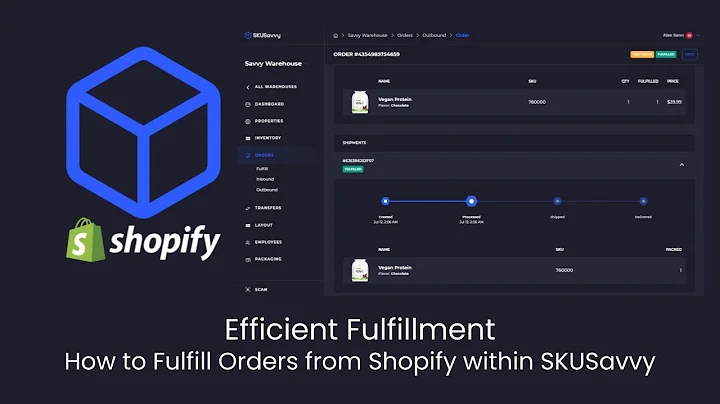Master Accurate Sizing for Ecommerce Success
Table of Contents
- Introduction
- The Importance of Accurate Sizing in Ecommerce
- The Difference between Asian and US Sizes
- Communicating with Suppliers to Obtain Size Charts
- Using Supplier Measurements to Create a Size Chart
- The Benefits and Drawbacks of Ordering Samples
- Best Practices for Displaying Size Charts on Your Website
- Size Finder Apps for Your Online Store
- Conclusion
- FAQs
The Impact of Sizing on Ecommerce
As an ecommerce dropshipper in the fashion niche, one of the biggest challenges you may face is inconsistent sizing. This is particularly true if your suppliers are based in Asia, where sizes tend to differ significantly from those found in Europe and North America. Failure to accurately represent sizing options on your website can lead to unhappy customers, negative reviews, and costly returns. In this article, we will provide guidance on how to ensure that you have the correct sizing information from your suppliers and how to display it in a clear and accessible way on your website.
The Difference between Asian and US Sizes
In the Western world, we're accustomed to sizing charts that are based on measurements in inches or centimeters. However, Asian sizing charts are based on unique measurements that differ significantly from those used in the US and Europe. For example, a medium-sized shirt in the US may correspond to a large-sized shirt in Asia. Failing to understand these differences can lead to a lot of frustration for both you and your customers.
Communicating with Suppliers to Obtain Size Charts
One way to obtain accurate sizing information is to communicate directly with your suppliers. Each supplier you work with may have different size charts, so it's important to ask for their Asian-to-American size chart if you're selling exclusively to the United States. Some suppliers may even offer to provide images of these charts so that you can include them on your website. However, keep in mind that not all suppliers may be able to provide this information. If this is the case, you'll need to use a standard Asian-to-US size chart. Although these charts may not be completely accurate, they're still a good starting point.
Using Supplier Measurements to Create a Size Chart
When suppliers don't provide a size chart, it may be necessary to use their product measurements to create your own size chart. This process can be tricky since numbers are hard to visualize. To create an accurate size chart, consider ordering at least one size of each product you plan to sell and styling it on an adjustable mannequin set to the different measurements the supplier has provided. This way, you'll be able to translate the supplier's definition of sizes into your own size chart, giving you a basic understanding of how different products might look on customers.
The Benefits and Drawbacks of Ordering Samples
While ordering samples can be time-consuming and expensive, it's a smart move if you want to ensure your customers receive products that accurately fit them. Additionally, ordering samples can also help you save time and money in the long run by reducing the number of returns and exchanges. If you're a dropshipper who does photoshoots, ordering samples can be especially beneficial since it allows you to use these pieces in your photos instead of relying on stock images.
Best Practices for Displaying Size Charts on Your Website
Once you've obtained accurate sizing information from your suppliers, it's important to display it in a way that's clear and easily accessible to your customers. Ideally, you should make this information easily visible on the product page or in the site footer. Be sure to also include information about how to convert your Asian sizes to US sizes or to local sizes based on your target audience. If you're selling in international markets like Europe, you'll want to make sure you're converting to that market's sizing as well.
Size Finder Apps for Your Online Store
In addition to displaying accurate size charts, you can make it even easier for customers to find the right size by incorporating size finder apps into your website. These apps use the customer's height, weight, age, and body type to make size recommendations. Apps like these have been known to increase sales and reduce returns, creating a more seamless shopping experience for your customers.
Conclusion
Ensuring accurate sizing information is critical for any ecommerce business in the fashion niche. By communicating with your suppliers, creating your own size charts, ordering samples, and using size finder apps, you can minimize returns, improve customer satisfaction, and ultimately drive sales for your business.
FAQs
- Can I trust the standardized Asian-to-US size chart?
- While these size charts are a good starting point, keep in mind that not all products will fit perfectly and you may need to adjust your size chart based on your own experience.
- How can I make sure my sizing information is clear on my website?
- Make sure your size chart is easily visible on the product page and in the site footer. Consider using sizing illustrations or graphics to make it even more clear.
- How much should I invest in ordering samples?
- The amount you invest in samples depends on your budget and business goals. However, keep in mind that ordering samples can save you time and money in the long run.






















